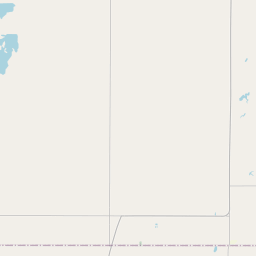First Presbyterian Church
Historical marker location:
Langford, South Dakota
( Marker is at the intersection of Lindley St. and Main St. on Lindley St..)







© OpenStreetMap contributors
The famous Mount Rushmore National Memorial, featuring the faces of U.S. presidents George Washington, Thomas Jefferson, Theodore Roosevelt, and Abraham Lincoln, is located in South Dakota. It was built by artist Gutzon Borglum and his team between 1927 and 1941.
About Marshall County
Marshall County Timeline
Marshall County, located in the northeastern part of South Dakota, has a rich history that stretches back thousands of years. The area was first inhabited by Native American tribes, including the Dakota Sioux, who utilized the land for hunting and gathering. European settlement began in the early 19th century when fur trappers and traders established contact with the tribes in the area.
The region that is now Marshall County was officially established as a county in 1885. It was named after Marshall Vincent, a prominent early settler and politician. The arrival of the Great Northern Railway in 1893 brought an influx of settlers and spurred economic growth in the county. Towns such as Britton, the county seat, emerged as centers of trade and agriculture.
Agriculture has been a major part of Marshall County's history. The fertile soil and favorable climate allowed for successful farming, with crops like wheat, corn, and soybeans dominating the landscape. The county also experienced a boom in dairy farming during the early 20th century. Today, agriculture remains an essential industry, but the county has diversified its economy with the expansion of manufacturing, healthcare, and services.
Marshall County has also faced challenges throughout its history. Like many other rural areas, it was impacted by the Great Depression and subsequent Dust Bowl in the 1930s. The county also saw significant population declines in the mid-20th century as young people left for urban areas. However, Marshall County has shown resilience and adaptability, and today it continues to be a vibrant community committed to preserving its heritage while embracing the opportunities of the future.
The region that is now Marshall County was officially established as a county in 1885. It was named after Marshall Vincent, a prominent early settler and politician. The arrival of the Great Northern Railway in 1893 brought an influx of settlers and spurred economic growth in the county. Towns such as Britton, the county seat, emerged as centers of trade and agriculture.
Agriculture has been a major part of Marshall County's history. The fertile soil and favorable climate allowed for successful farming, with crops like wheat, corn, and soybeans dominating the landscape. The county also experienced a boom in dairy farming during the early 20th century. Today, agriculture remains an essential industry, but the county has diversified its economy with the expansion of manufacturing, healthcare, and services.
Marshall County has also faced challenges throughout its history. Like many other rural areas, it was impacted by the Great Depression and subsequent Dust Bowl in the 1930s. The county also saw significant population declines in the mid-20th century as young people left for urban areas. However, Marshall County has shown resilience and adaptability, and today it continues to be a vibrant community committed to preserving its heritage while embracing the opportunities of the future.
Marshall County Timeline
This timeline provides a glimpse into the major events and milestones that have shaped the history of Marshall County, South Dakota.
- 1873 - Marshall County is established by the Dakota Territorial Legislature.
- 1878 - The town of Britton is founded.
- 1880 - The first courthouse is built in Britton.
- 1881 - The Great Dakota Boom brings settlers to the area.
- 1882 - The railroad reaches Britton, spurring growth and development.
- 1883 - The town of Veblen is founded.
- 1886 - The town of Langford is founded.
- 1890 - The first newspaper, the Britton Sentinel, is established.
- 1892 - The town of Eden is founded.
- 1917 - The Marshall County Courthouse is destroyed by fire.
- 1920 - The current Marshall County Courthouse is built.
- 1930s - The Dust Bowl and Great Depression impact the county.
- 1950s - The construction of highways and infrastructure boosts the county's economy.
- 1970s-1990s - Agriculture remains a major industry, but modernization impacts small farms.
- 2000s - Wind energy becomes a growing industry in Marshall County.